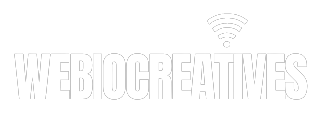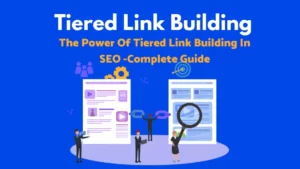
The Power of Tiered Link Building in SEO -Complete Guide
Table of Contents
⚡ New here? Check out our most demanding Landing Page Design & SEO Services Now!
Are your competitors taking up your place in the SERP? Do you want to beat them? Yes, every digital marketer wants that; there is no secret. We have seen a lot of changes in SEO over the past few years. There is always something new; a lot of new strategies and techniques are emerging. Today, I am going to share a secret recipe with you.
With my experience in SEO, one strategy has proven to be effective and remains a powerful tool in improving a site’s search engine rankings: tiered link building. So, I’ll give you the lowdown on what tiered linking is, its benefits and risks, and how to do it like a pro. Keep reading to learn why tiered linking is a good option if you want to boost your SEO efforts and create a robust link profile.
What Is Tier Link Building? Basics of Tiered Link Building
In its essence, tiered link building is a strategic approach to creating a multi-tiered system of backlinks that point to your website. Is it difficult to understand??? Don’t worry, I will make it simple.
Actually, the idea is to create a hierarchical structure of links with different levels or “tiers” of backlinks. Each tier serves a distinct purpose in improving your website’s SEO. Imagine a pyramid structure having three different levels, like in the pic below.

Tiered link building involves creating a network of backlinks where the highest-quality links, often referred to as “Tier 1,” point directly to your website. These are typically powerful and authoritative links that are acquired from trusted sources.
The “Tier 2” links point to the Tier 1 links, reinforcing their authority, and the process may continue with “Tier 3” or even further tiers, depending on the complexity of your link-building strategy.
Benefits of Tiered Link Building
⚡ New here? Check out our most demanding Landing Page Design & SEO Services Now!
I hope the concept is clear now and you have a basic understanding of what tiered link building is, but you might wonder why to implement this technique and what are its benefits in SEO, so here I am mentioning a few benefits:
1. Enhanced SEO Performance
One of the primary benefits of tiered link building is the substantial improvement it can bring to your website’s SEO performance. By creating a structured system of backlinks, you can funnel link juice from Tier 2 and Tier 3 links to your Tier 1 links and ultimately to your website. This strengthens your backlink profile, resulting in higher search engine rankings.
2. Efficient Link Equity Distribution
Tiered link building allows you to distribute link equity more efficiently. Instead of relying solely on a few high-quality backlinks, you can leverage a diverse range of links, ensuring that the authority and power of these links are shared across your site.
3. Natural Link Building
Search engines value natural link profiles. With tiered link building, you can mimic the natural growth of backlinks. Instead of having an influx of high-quality links all at once, you can gradually build up your link profile over time, making it appear more organic and less suspicious to search engines.
4. Targeted Linking
Tiered link building enables you to be strategic in your linking efforts. You can direct Tier 2 and Tier 3 links to specific pages on your site, ensuring that the most relevant and valuable content receives the most link juice.
Risks of Tiered Link Building
Tiered link building offers numerous benefits, but like every bright side, it has a dark side, too. There are some potential risks and pitfalls associated with this strategy that you must be aware of:
1. Quality Over Quantity
The quality of links is crucial to the success of tier-based link building. Your efforts could not be as successful if you concentrate on quantity over quality. Think like building a house – if you focus on the quality of the materials and construction, it will last much longer than if you focus on just putting a roof on as quickly as possible. So, prioritizing high-quality links is more important than a large number of low-quality ones.
2. Over-Optimization
Over-optimizing your anchor text or using the same match keyword repeatedly in your Tier 2 and Tier 3 links can trigger red flags with search engines. It’s important to maintain a natural and varied anchor text profile.
3. Algorithm Updates
Search engines update their algorithms frequently, which can affect the effectiveness of your tiered linking strategy. If your link-building strategies are outdated, they will not keep up with changing algorithms, and your strategy will be less effective. To mitigate this risk, it is important to stay informed of the latest SEO trends.
How to Build First, Second, and Third-Tier Links?
Now that you have a solid grasp of the principles and benefits of tiered link building, it’s time to delve into the nitty-gritty details of how to create your first, second, and third-tier links. Building each tier effectively requires a different approach, and understanding these nuances is crucial for a successful tiered link building strategy.
What Are Tier 1 Links? How to Build Your First-Tier Links?
Your first-tier links are the foundation of your entire tiered link-building structure. These links are typically the most authoritative and powerful, so acquiring them should be a strategic process. Here’s how to go about it:
1. Identify High-Quality Websites
Look for websites in your niche or industry that have strong domain authority and a good reputation. These websites should be considered trustworthy by search engines. You can check their matrix using reliable SEO tools like Moz, Ahrefs or SEMrush.
2. Outreach and Guest Posting
Once you have the high DA websites, contact their web admins or editors and propose guest posting opportunities. Write valuable, informative, and relevant content that includes a natural link back to your site.
3. Use Natural Anchor Text
In your guest posts, use natural anchor text that fits seamlessly within the context of the article. Avoid over-optimization with exact-match keywords.
4. Diversify Your Sources
Don’t rely on just a few websites for your first-tier links. The more diverse your sources are, the stronger your link profile becomes.
What Are Tier 2 Links? Building Your Second-Tier Links
Search engines like Google view Tier 2 links as a way to transfer authority to Tier 1 web pages, which are your most important ones. By doing this, it enhances the value and impact of Tier 1 backlinks, ultimately boosting your search engine rankings. These links, such as guest posts on relevant sites, social media shares or forum mentions, are aim to link your content with both google and audience.
When it comes to the technical details, Tier 2 links can be both dofollow and nofollow, but it’s better to prioritize dofollow links. Nofollow links are just there to make things look natural. Here’s how to build them effectively:
1. Leverage Web 2.0 Properties
Consider creating web 2.0 properties like blogs, microsites, or social media profiles. These can serve as platforms to link back to your first-tier links.
2. Internal Linking
Utilize internal linking within your website to direct link equity from one page to another. This can help funnel link juice to your first-tier links.
3. Social Signals
Share your first-tier content on social media platforms to generate social signals and encourage further sharing and engagement.
What Are Tier 3 Links? Building Your Third-Tier Links
Third-tier links are the final layer in your tiered link-building structure. While they may not be as authoritative as first-tier links, they still contribute to the overall strength of your link profile. They are meant to get people’s attention and make them look at the links on Tier 2.
But, these Tier 3 links don’t help the websites they link to become more popular. They are like dead-end roads for link reputation because they don’t pass on any benefits to other websites.
However, they are not completely useless. Google, the popular search engine, still pays attention to them. Google uses Tier 3 links as clues to decide which links are important or not. So, Tier 3 links can help make the Tier 2 links more relevant in search results.
Here’s how to build them effectively:
1. Blog Comments
Engage with relevant blogs and leave thoughtful comments that include a link back to your second-tier properties or directly to your first-tier links.
2. Forum Participation
Participate in forums and discussions related to your niche. Include your third-tier links in your forum signature or within your forum posts, but ensure that your contributions are valuable and relevant.
3. Social Bookmarking
Submit your content to social bookmarking sites to create additional backlinks. Be cautious not to overdo this, as excessive social bookmarking can appear spammy.
4. Link Wheels
Consider creating link wheels, a technique where third-tier properties link to each other and ultimately connect to your second-tier links, reinforcing the link equity.
What Are Tier 4 Links?
Black hat SEO practitioners often use Tier 4 links and are not recommended for white hat SEO strategies. These links include poor-quality backlinks from sources like bookmarking sites, index submission sites, and URL shorteners. While Tier 1 to Tier 3 links can be considered safe, Tier 4 links are typically used by desperate link spammers to assist third-tier links in getting indexed by Google. It’s best to avoid Tier 4 link building as it’s not worth your time and effort.
Is White Hat Tiered Link Building Still Effective?
The short answer is yes; tiered link-building is still effective. With search engines cracking down on black hat SEO tactics, it’s essential to practice white hat-tiered link building. This means adhering to ethical and best practices in acquiring backlinks. White hat-tiered link building ensures that your website remains in compliance with search engine guidelines and avoids penalties.
Common Mistakes in Tiered Link Building
Avoiding common mistakes is key to the success of any SEO strategy. Let’s take a look at some of the most common missteps in tiered link building.
1. Neglecting Tier 1 Links
While it’s essential to strengthen your Tier 2 and Tier 3 links, neglecting your Tier 1 links can be a critical mistake. Tier 1 links are the foundation of your link profile, and without strong Tier 1 links, the entire structure can crumble.
2. Using Automated Link Building
Automation can be tempting for link building, but it’s a risky move. Automated link building can lead to low-quality and irrelevant backlinks, which can harm your SEO efforts. Manual link acquisition is the safer and more effective approach.
3. Ignoring Link Profile Diversity
Diversity in your link profile is crucial. If you solely focus on one type of link or anchor text, you risk over-optimization and potential penalties from search engines. Ensure that your link profile is a mix of different types of links.
In Conclusion
⚡ New here? Check out our most demanding Landing Page Design & SEO Services Now!
Tiered link building is a potent SEO strategy that can significantly enhance your website’s ranking and visibility in search engine results. By understanding its benefits, potential risks, and best practices, you can leverage this approach to supercharge your SEO efforts. Remember, quality over quantity is the golden rule, and ethical white hat practices are essential to long-term success. With the right approach, tiered link building can be a valuable tool in your SEO toolbox.

Webio Creatives Team
WebioCreatives keeps you informed on the latest digital marketing trends and experiences that leave lasting impressions. Make informed decisions with our expert guidance.






